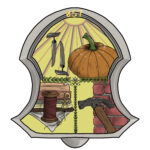Ōsu

- Period: Legendary Period
- Occupation: Prince
- Family: Emperor Keikō (father) Harima no Inabi no Ōiratsume (mother) Yamato Takeru (brother) Wakayamatoneko (brother) Kushitsunuwake (brother) Kamukushi (brother)
- Birth: –
- Death: –
Ōsu
Ōsu (大碓皇子) was the son of Emperor Keikō and Harima no Inabi no Ōiratsume.
He was the twin of Yamato Takeru having been born on the same day.
During his father reign, he was sent to collect the daughters of Kambone by the names of Anetohoko and Ototohoko as his father wanted to marry them. However, Ōsu decides he wants to marry them himself and takes them to bed.
The Emperor later finds out and is furious. This is related in the nihongi.1
The version in the kojiki is slightly different in that he is sent to collect Yehime and Otohime to confirm their beauty. Ōsu marries them instead and send different women to the Emperor.
The Emperor realising these women are the wrong ones only looks at them and never marries them.34
Later on the Emperor asks why Ōsu does not attend him morning and night and sends Yamato Takeru to teach him his duties. After five days he asks where Ōsu is, Yamato Takeru saying their was trouble so in the morning while he brother went to the bathroom he grabbed him, crushed him and pulled of his limbs.
Wrapping them in matting and then throwing them away.34
This was the reason why Yamato Takeru was later sent to deal with the Kumaso later in the Emperors 28th year.234
The nihongi states during the 40th year of Emperor Keikō’s reign a decision needed to be made about who would deal with the rebelling Emishi. Yamato Takeru suggests Ōsu be sent, but he became scared and did not go.
Due to this he was instead sent to Mino to govern, and became the ancestor of the Kimi of Muketsu and Kimi of Mori.1
This of course, contradicts with the kojiki where he is stated to have been killed.2
Footnotes
1. Aston. W.G. (1896) “Nihongi Volume 1: Chronicles of Japan from the Earliest Times to AD697”. Tuttle Publishing.
2. Ponsonby, F. (1959) “The Imperial House of Japan.” Kyoto: Ponsonby Memorial Society.
3. Yasumaro. O, translated by Gustav Heldt. (2014) “Kojiki. An Account of Ancient Matters”. New York: Columbia University Press.
4. Chamberlain, B. H. (1932) “Translation of the Kojiki.” Kobe: J.L. Thompson & Co.
 | Check out the Japan Archives, our Japanese History Podcast. |  |
Check out our Gaming Channel on Youtube. |  | |
Find the website useful? |



